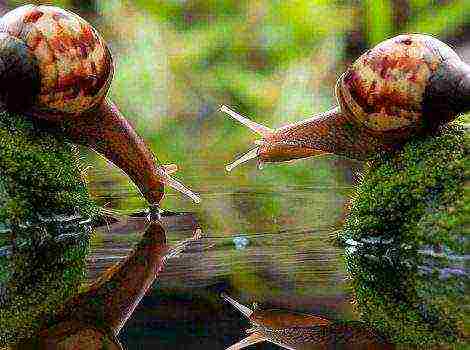Be that as it may, the fact that ants mastered mushroom farming twenty million years ago remains a fact. Moreover, their cultivation technology is much more perfect and efficient than the one used by people. And what is interesting, the trade secret is strictly observed: outside of anthills, these types of mushrooms do not grow.
In addition, each ant population has its own strains of fungi. When a young female flies away from her mother's nest to create a new family, she takes with her the culture of the fungus, which the workers put into a special bag for her.
Most studied in this regard leaf cutting ants... The fibers of the leaves are poorly digested by ants, so they do not eat them, but use them as a substrate for growing mushrooms.  Photo: Depositphotos
Photo: Depositphotos
Small mushroom growers plant mushroom plantations deep underground, below the topsoil, in which other types of mushrooms live, in order to exclude the contamination of mushroom gardens by weeds.
When a new family is created, a group of mushroom workers moves to a new place together with a female leaf cutter. They cut off the leaves of trees, grind them in the nest, moisten them with saliva, thus making a nutritious and sterile substrate. Then they mold twigs from it like coral ones and sow mushroom spores on them - this is how the laying of a mushroom plantation takes place.
Within two weeks, the mushrooms grow - real tiny mushrooms with legs and caps. Food for the brood of ants is ready.  Photo: Depositphotos
Photo: Depositphotos
An army of workers is being added. And now, several compartments for growing mushrooms have been built underground: in some you can harvest, in others, spores are sown, in the third, the soil is being prepared - the work is in full swing, the anthill is growing. These compartments are interconnected by gateway corridors.
In addition to preparing the substrate, protecting seedlings from various fungal diseases, harvesting, the working ants take the waste soil into special garbage chambers, ventilate the compartments in which the mushroom beds are located.
The nest as a whole, garbage containers, compartments with beds are surrounded by special tunnels through which water is drained during rains.
There are species of ants engaged in animal husbandry - they breed aphids and other sucking insects. These "cows" suck the sap of plants, secrete honeydew, which accumulates up to 20% of sugar. Before hibernating, the ants process this sugar into fat, which provides them with a comfortable wintering. 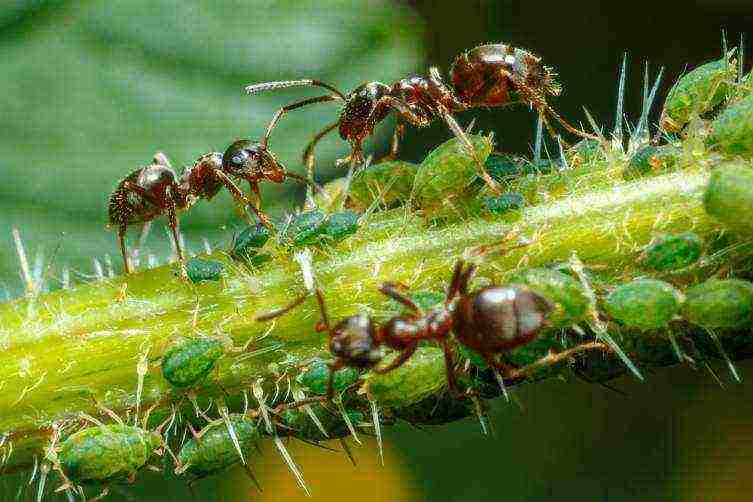 Photo: Depositphotos
Photo: Depositphotos
Aphids are weak insects, they have many enemies, they spread slowly, so they were not against domestication. Ants protect and graze their herds, build shelters for them, and when cold weather sets in, they transfer them to anthills.
Ants contribute to an increase in the livestock: they take part of the aphids and transfer them to other places, organizing such kind of livestock farms.
Thanks to ant cares, the lifespan and health of aphids increases, stronger individuals get the opportunity to settle independently.
At the same time, plants also have a benefit: ants often visit grazing herds of aphids, simultaneously protecting the food supply from other, more harmful, insects. Plants have adapted to coexist with aphids and their hosts without harming themselves.
This begs the question: why do intelligent beings, people, do not manage on Earth without prejudice to nature?
What else to read on the topic?
How do ants live?
Do ants build megacities? How to deal with ants in the garden and vegetable garden?
Many species of ants have learned to keep "pets" and grow mushrooms to provide themselves with a constant food source.
A horde of aphids sits on a rose bush. A gardener can kill pests with an insecticide. But by doing this, he will destroy a large ant farm.
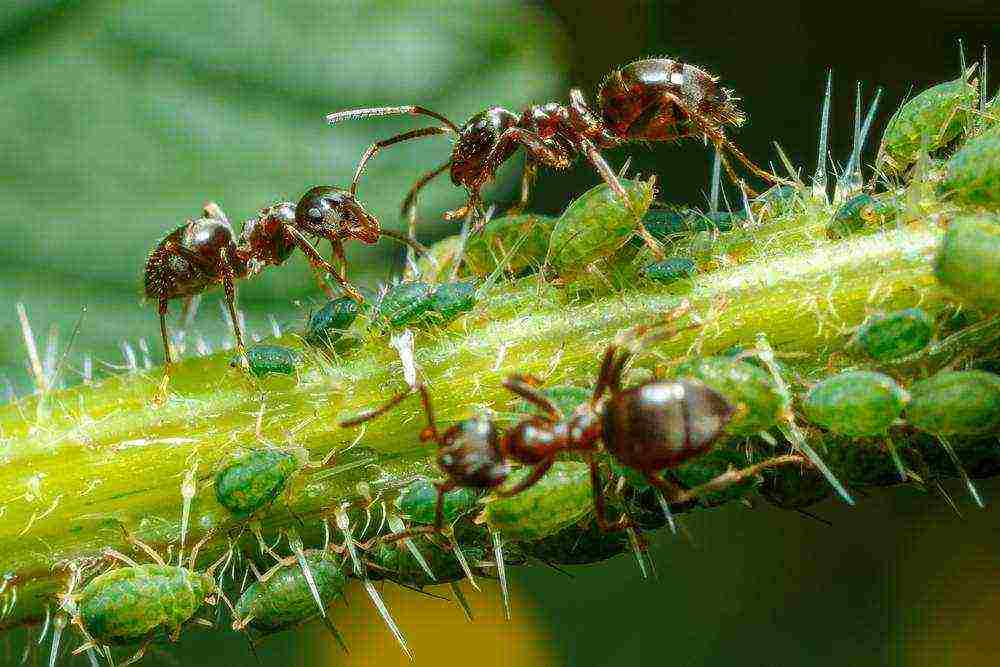
Aphids feed on plant sap and regularly excrete sweet excrement called honeydew. It is a vegetable sap partially digested by aphids. Ants feed on secretions of aphids and protect them from enemies who dare to enter the territory of the "pasture". Approaching the aphid, the ant touches its belly with its antennae, and the aphid secretes a new portion of the honeydew. Ants regularly "milk" their "cows" like livestock breeders.
Honey barrels
In the honey ants living in Australia, the Pacific Islands and America, some workers never leave the anthill and spend their entire adult life in one of its chambers, clinging to the ceiling with their paws. Honey ants also feed on honeydew, the living storage of which is served by a special caste of workers - "honey barrels". Other worker ants fill them with honey, regurgitating the honeydew they brought. When it becomes difficult to get the pad, the barrel ants, in turn, regurgitate food to their fellows.
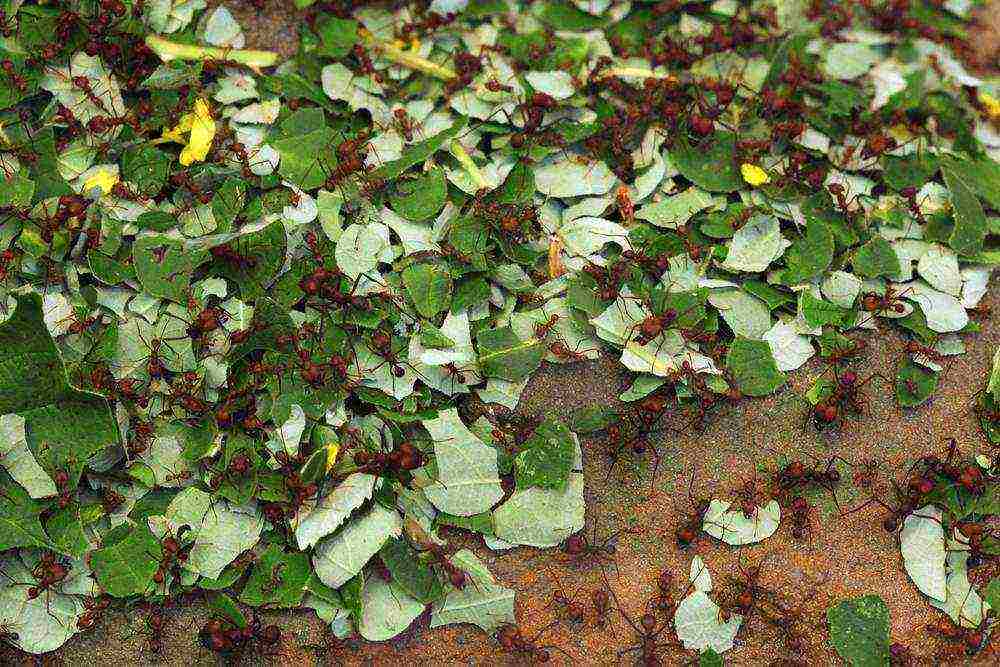
Mushroom gardens
Leaf-cutting ants (genus Atta) living in South America arrange real mushroom plantations in their anthills.
During the day, worker ants gnaw off pieces of leaves of some plants and carry them to the anthill. Other workers chew these pieces with their jaws, turning them into homogeneous compost, spread it out in an even layer in special chambers and place pieces of mycelium on top. The mycelium soon expands and covers the entire "plantation". When the crop is ripe, the ants eat the mushrooms themselves and feed the larvae with the chewed mushroom mass.
So that the family does not suffer from interruptions in the supply of food, several plantations function at the same time in the nest. On one, mushrooms grow, on the other, their fruit bodies are collected for feeding the brood, and on the third, where there will be no new harvest of fruits, ants collect spores of mushrooms in order to sow new "vegetable gardens" with them. Each plantation is located in a special, completely isolated sterile chamber and is equipped with a powerful air conditioning system. When the spores are collected, the depleted leaf substrate on which the mushrooms grew are transferred by the ants to garbage containers - huge, more than 2 m high vertical chambers. When the containers are filled with "waste" substrate, the insects isolate them from the rest of the nest.
602
MK met the smallest pets
12/05/2014 at 17:37, views: 15413
When psychologists recommend getting a pet to relieve stress from stress, it is a priori implied that it is some kind of "cute" four-legged - a dog, a cat, a decorative hog or (we now have such a fad) a raccoon. But no one ever advised to have ... ants at home. And in vain. From the point of view of science, these insects of the order of Hymenoptera for us, people, are perhaps the most curious "living material" on Earth, since they are considered our biopolitical counterparts and can teach something not only to ordinary breeders, but also to the mighty of this world. For example, politicians.
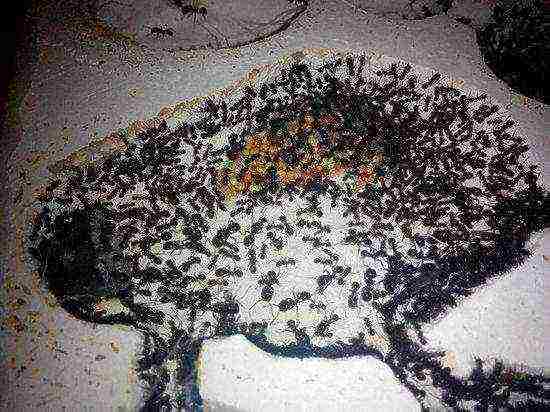
This is how ants live in formicaria.
On a carpet of ants
Student Mark Razumov has been studying ants for the 6th year. He says that people with a contemplative mindset, who are interested in the structure of society, this hobby suits perfectly well.
Mark, like many others, had a bad experience with ant breeding as a child, when his seven-year-old grandmother brought him a neatly cut top of a forest anthill in a three-liter jar. Goose bumps, in spite of the efforts of their owner, soon one after another went to another world. After crying, Mark decided that when he grows up, he will first study from now what species are and how to keep them, and only after that he will bring them to his house. And so he did.A few years later, after thorough "walking" in circles of theoretical knowledge and specialized forums, the young man began to breed first reaper ants, and then black garden ants.
Now he has about 10 thousand ants of 12 species at home, including such a rare species as kamponotus fellach (carpenter ants). 2 years ago Mark ordered them from Israel. A colony of 50 ants and a queen (the standard version for sale) went to him in a large test tube, covered with cotton ... in an ordinary parcel, however, in first class. All the ants survived two weeks on the way. They also liked their new homeland, and now the number of this family has exceeded 500. Periodically, pets from one formicaria (artificial anthill), then from another run to master the space, gnawing the mesh separating them from the outside world.
“Once I came, and in my room there was a living“ palace ”on the floor of one and a half (as I later counted) thousand ants. Operation "return" took me more than five hours, - Mark laughs, recalling the incident.
Myrmikiper Mark Razumov. Photo from the personal archive.
Deadly shooting in the series
System administrator Nikolay Yudin is a myrmikiper (ant breeder) with five years of experience. An unusual zoo hobby literally fell on his head on one of Moscow streets during an ant summer. Nicholas, who was planning on him the uterus of a black garden ant, was also keenly interested in these insects in childhood, did not throw it away, but squeezed it in his fist, deciding to use the chance that had fallen to him. The ancestor of his first home colony lacked one limb, and she received the appropriate name - Chromopod. A month later, the first generation of ants appeared in an incubator from a 20-millimeter syringe (a common version of "rooms" for beginners to form colonies), then the second, the third ... About a year later, Nikolai gave the Chromopod and its already numerous offspring to the biology room of one of the schools ... Today, my interlocutor has the experience of breeding completely different species, including very large ants - Asian kamponotus singularis. Their queen reaches a length of 2.5 cm, soldiers - 15–20 millimeters.
By the way, one of Yudin's colonies fell victim to the ministers of art. Filmmakers approached the myrmikiper via an Internet forum and asked them to rent out the ants - as a "props" for some domestic series. Handing over a 20-liter farm with reaper ants to the producer, the breeder clearly instructed how to care for the insects, but when he got to the shooting pavilion a month later, he found next to the anthill only a mountain of twisted corpses mixed with pieces of kebabs, rolls and sneakers. The filmmakers have been trying hard to feed the insects with human snacks all this time. But what is good for a person is death for an ant.
Breeder of ants Nikolay Yudin. Photo from the personal archive.
Doubles of man
Ants are socially advanced insects. Therefore, watching their colonies is both interesting and instructive at the same time.
In the ant world there are agrarian-oriented states, where 80% of the population are reaper ants, engaged in the collection and preparation of seeds from cereals; there are, on the contrary, militant tribes, hunters for territories and slaves. Scouts can be conventionally called the creative class of ants. At the same time, democratic systems can be established in some ant families, while totalitarianism and tyranny reign in others. Everything is very variable.
According to Anatoly Zakharov, an entomologist, Doctor of Biological Sciences, a leading researcher at IPEE RAS, ants are biopolitical doubles of humans. Among adults in the anthill, there is a deep differentiation (separation) of functions.Insects, if we use the concepts we are used to, there are many professions: farmers, builders who build dwellings, roads, tunnels, hunters, coordinators, orderlies, cleaners, scouts, nannies, watchmen, observers, grooms (lizuns) who clean other ants, honeydew collectors (that is, those who breed aphids and collect the sweet liquid secreted by them - honeydew). The society of insects is similar to the human society to the extent that with noble persons - ant queens - they have their own retinue. At the same time, they have a common brood, common food supplies and one roof over their heads for all. During its life, an ant can try several social roles - to be a nanny, a builder, a soldier, a scout, a forager, stopping at what he likes the most. The final choice is influenced by a psychological predisposition: brave individuals are more likely to become hunters, and more calm and phlegmatic ones, for example, will become honeydew gatherers. And someone will live their whole life as a dependent and a drone, lazily watching their fellow tribesmen, heroic in work.
Ants even fight just like humans! It became crowded on one territory - a conflict begins. Only we are trying to explain the battles for resources by ideology, religion, geopolitics. By the way, ant wars are very cruel, when hundreds of thousands, or even millions of ants can die in a few hours. But at the same time, there is always an alternative scenario, which is realized if the ants after the first collision have some time to think. In this case, instead of fighting, they choose to unite, starting an intensive exchange trade in everything they can: pupae, larvae, females, worker ants, nesting material. As a result, a federation with a common territory, with a common strategy, with a common smell appears in place of individual nests.
Self-sustaining colony
Caring for ants does not involve any particular difficulties, especially if you stop at domestic species such as red, garden or forest (exotic species can be demanding on the level of humidity and nutrition). The most unassuming species and rather large (and the larger the ant, the easier it is to observe its life), which is usually recommended for beginners, are the reaper ants. Experienced breeders do not shy away from breeding them for the soul. For example, Nikolai Yudin's house now has a colony of five thousand reapers in a 75-liter gypsum anthill.
Ants are very neat creatures and all the garbage is stored in one corner. Their deceased comrades are also carried there. So they will carry out the general cleaning themselves, and you will only have to clean one single corner.
Medium-sized colonies won't bother you in terms of food. "For some species, the basis of the diet is water syrup with sugar and grain, for others, predatory, meat in the form of marble cockroaches and mealworms, crickets and fruit flies," says Mark Razumov. However, giant colonies can be very voracious. One of the breeders in a house near Moscow raised a million forest ants, equipping them with a room of 12 squares for an apartment. In addition to various syrups, which had to be diluted in liters, this brotherhood ate a kilogram or two of meat every day. And then the zealous man figured out how to avoid spending: he brought the pipe out of the room where the ants were kept to the nearest forest, fortunately, his country estate was located on the edge of a garden partnership. And the ants, put on complacency, every day began to go "to the ground" and independently get their own food.
By the way, ants have an excellent memory. “Coming out to the site in the spring, the ant remembers the road it took in the fall for the last time; he remembers the places where there were outposts, forage nests, forks, and is able to distinguish up to 40-50 of his comrades "in person", - says Anatoly Zakharov.- The tactile code, or, in other words, the language of the antennas, helps ants communicate. They tap their antennas against each other, transmitting information, and very meaningful. They can indicate exactly the place where you need to go. "
If you suddenly decide to join myrmikeppers too, then you can either wait until summer to catch the queen ant during the traditional ant summer, or buy a small colony of ants. It will cost from about 300 to 1200 rubles. Moreover, on the forums you can always find breeders who put their ants in good hands for free. True, all these will be domestic bottled pets. Species atypical for Russia, such as leaf cutters, can cost $ 1,000 for a "queen" with a small retinue. An ant farm made of gypsum will cost you 500-1000 rubles.
BY THE WAY
Ants are one of the most common insects on the planet. Today there are about 12 thousand different species. The weight of an ant can range (depending on the species) from 1 to 1500 milligrams, length from 1 to 45 millimeters.
In nature, a queen ant lives for 20–25 years, and a worker ant lives for up to 4–7 years. Injured, injured individuals who have lost the ability to walk long distances, the colonists do not offend and continue to feed. And the ant itself can change profession. For example, becoming a nanny or grooming.
Dear Readers!

